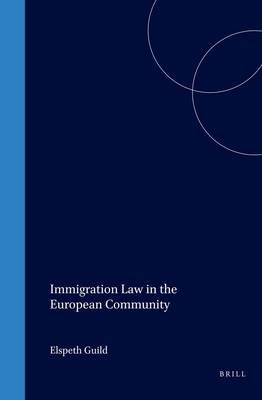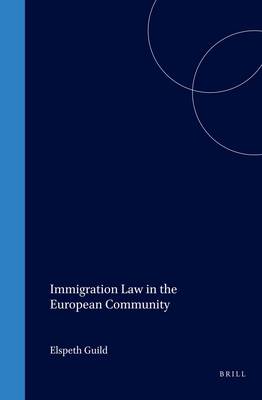
- Afhalen na 1 uur in een winkel met voorraad
- Gratis thuislevering in België vanaf € 30
- Ruim aanbod met 7 miljoen producten
- Afhalen na 1 uur in een winkel met voorraad
- Gratis thuislevering in België vanaf € 30
- Ruim aanbod met 7 miljoen producten
Zoeken
Omschrijving
Immigration law continues to be an issue of substantial interest in the European Union. The institutions and the Member States are formulating the type of immigration law which the Union will have following the substantial move of competence in the field from Member State level to the Union with the amendments to the EC Treaty introduced by the Treaty of Amsterdam in 1999. This is a particularly important period within which to take stock of the existing immigration law of the European Union and how it has been developed. In order to understand the current law and lay the foundations for the future, a historical analysis of the development of European Union immigration law is needed.
This volume charts the development of European Community immigration law from the conclusion of the EEC Treaty to the present day, first focussing on the development of the law relating to Community nationals and their third country national dependents, then looking at the extension of Community immigration law to third country nationals through agreements between their states of origin and the EC. Special attention is given to the rights of Turkish workers under the agreement between Turkey and the EC and the possibilities of residence and economic activity for nationals of the Central and Eastern European countries under the Europe Agreements. The centre of analysis of this book is the individual migrant: what are the rights and duties of the individual and what is his or her relationship of rights on the one hand with the Member State and on the other hand with the European Community? This book examines the structure and content of European Community immigration law from the perspective of the individual most closely affected by that law.
This volume charts the development of European Community immigration law from the conclusion of the EEC Treaty to the present day, first focussing on the development of the law relating to Community nationals and their third country national dependents, then looking at the extension of Community immigration law to third country nationals through agreements between their states of origin and the EC. Special attention is given to the rights of Turkish workers under the agreement between Turkey and the EC and the possibilities of residence and economic activity for nationals of the Central and Eastern European countries under the Europe Agreements. The centre of analysis of this book is the individual migrant: what are the rights and duties of the individual and what is his or her relationship of rights on the one hand with the Member State and on the other hand with the European Community? This book examines the structure and content of European Community immigration law from the perspective of the individual most closely affected by that law.
Specificaties
Betrokkenen
- Auteur(s):
- Uitgeverij:
Inhoud
- Aantal bladzijden:
- 372
- Taal:
- Engels
- Reeks:
- Reeksnummer:
- nr. 2
Eigenschappen
- Productcode (EAN):
- 9789041115935
- Verschijningsdatum:
- 1/04/2001
- Uitvoering:
- Hardcover
- Formaat:
- Genaaid
- Afmetingen:
- 160 mm x 240 mm
- Gewicht:
- 737 g

Alleen bij Standaard Boekhandel
+ 787 punten op je klantenkaart van Standaard Boekhandel
Beoordelingen
We publiceren alleen reviews die voldoen aan de voorwaarden voor reviews. Bekijk onze voorwaarden voor reviews.








